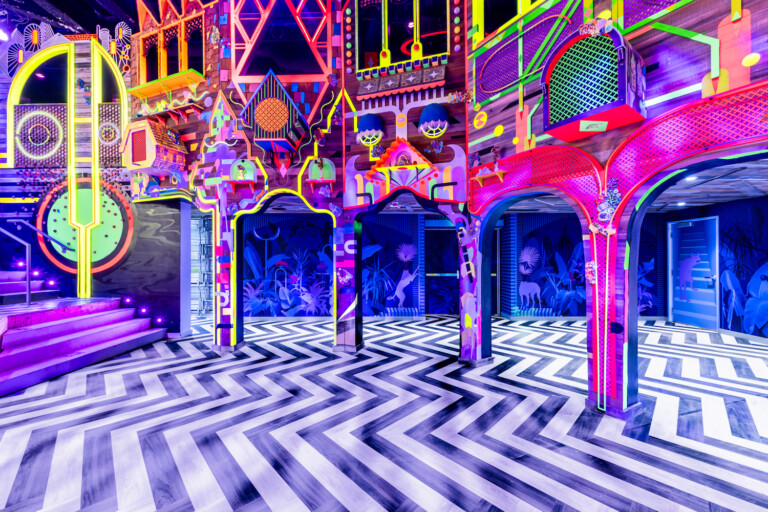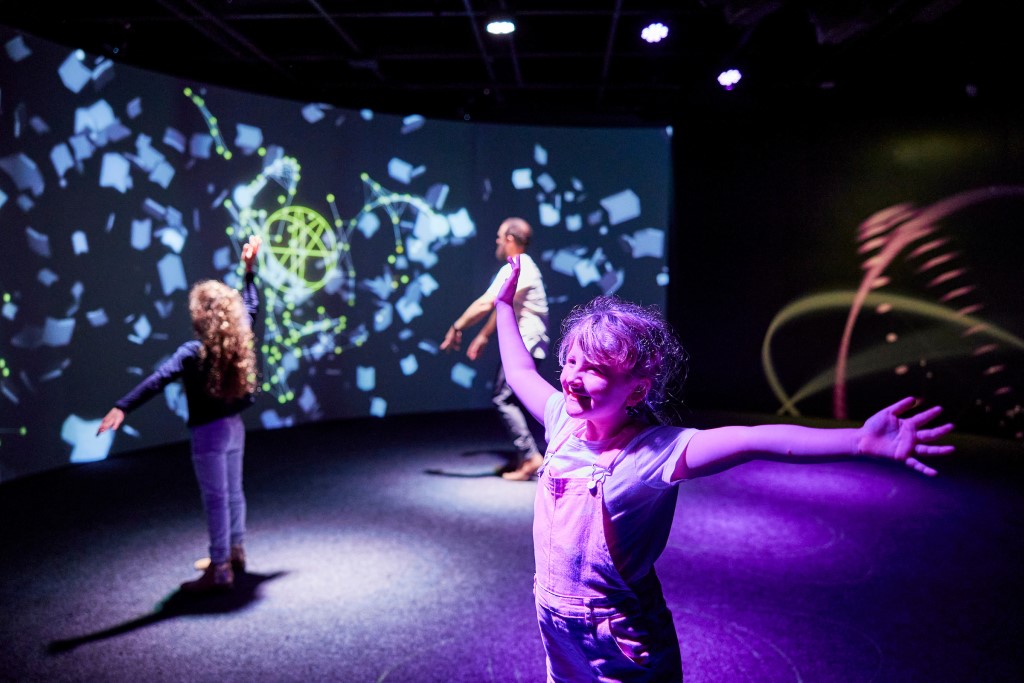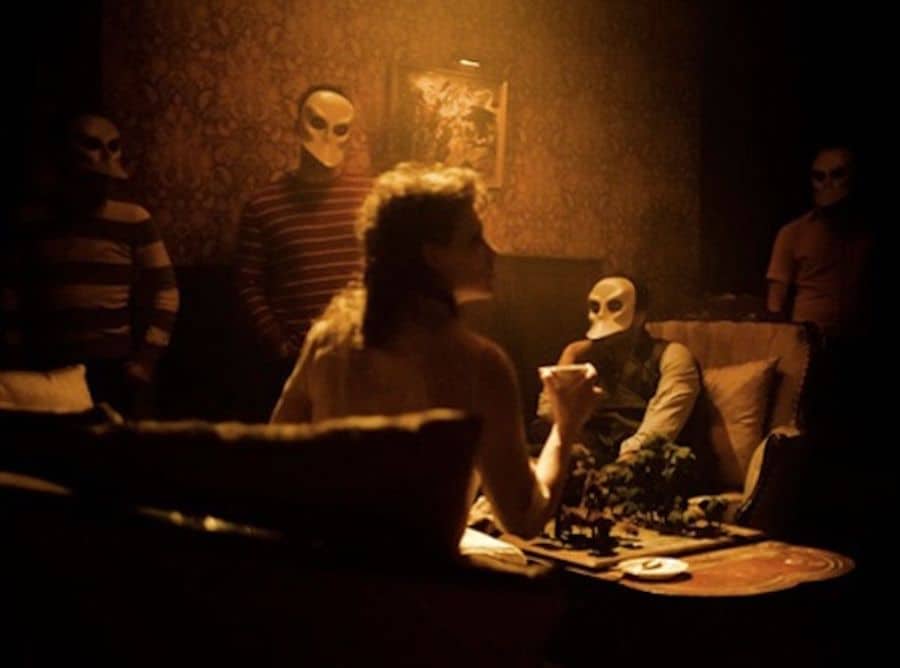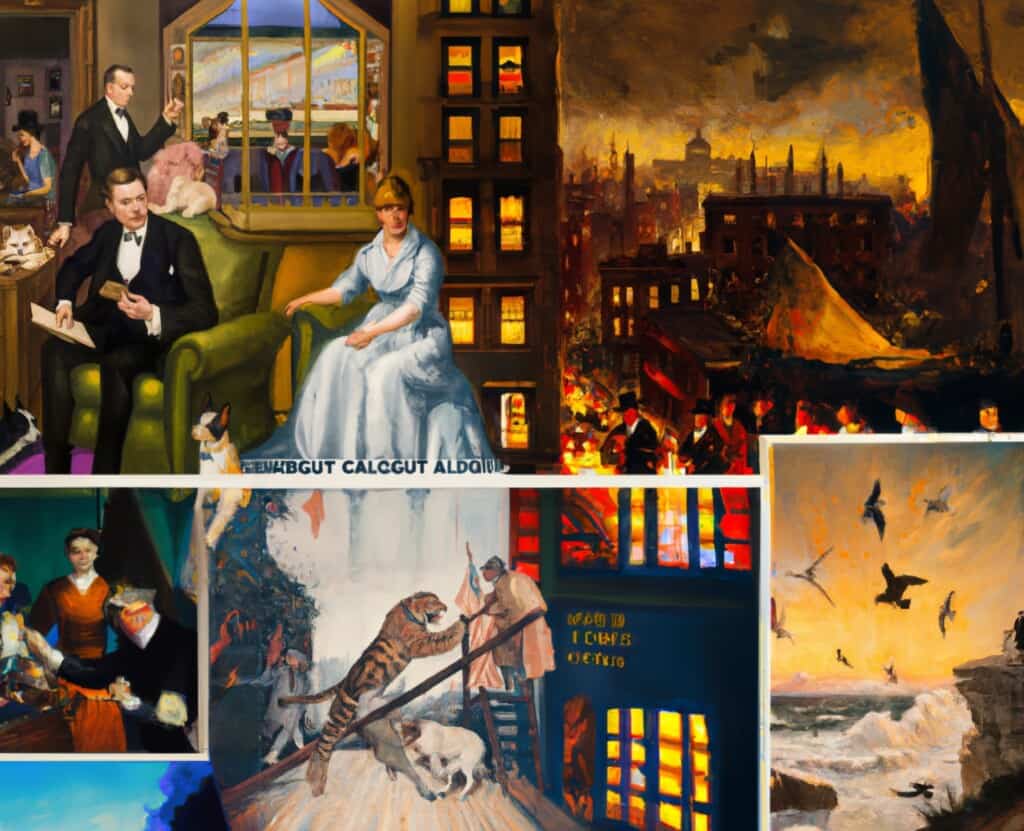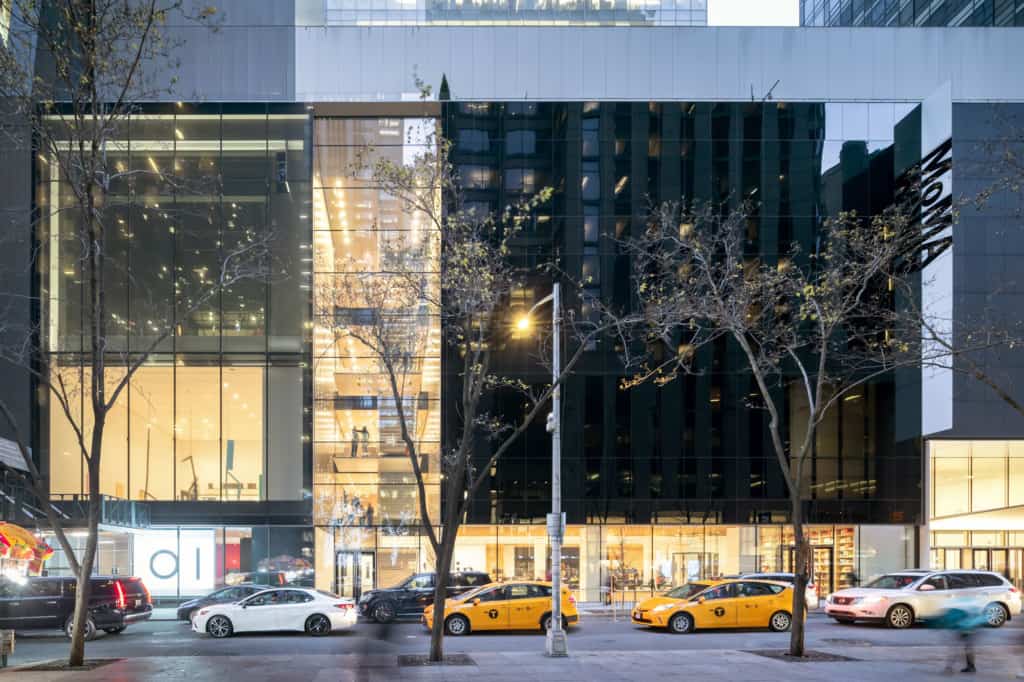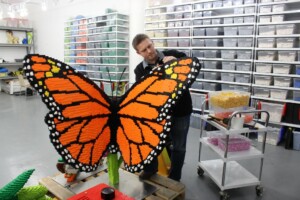By Ariel Efron, group director—creative services, and Christine Murry, content director, and edited by Hilary McGraw, content developer, Art Processors.
In the past decade, a whole slate of storytelling trends have popped up in various public attractions: in museums, zoos, and theaters all across the country.
What tends to connect these trends is that they all involve using emerging technologies like AR in order to offer experiences that create new realities for visitors—fully transporting them to different times, places, and scenes. They also have their appeal in providing experiences that are somehow both personal and communal. This gives us, the visitor, agency to make choices about what we see while also presenting us with a holistic experience that we can engage in together.
In these new storytelling modes, we get to collectively ohh and ahh over the thrill of being a part of something unexpected and new. It’s immersive storytelling with a twist.
And in the context of the past few years, these storytelling trends make sense. People’s lives have changed rapidly—impacted by a global pandemic and increasing isolation in how we work, how we get our news, and also how we play. People are hungry for communal experiences. And as a result, we’re seeing storytelling move more and more in that direction.
At Art Processors, we consider ourselves enthusiastic experts in creating innovative storytelling experiences. We are constantly seeking new tools and inspirations in our work. Here are some storytelling trends that have inspired us lately.
Maximalist storytelling
The trend for maximalist storytelling is exactly what it sounds like. This is storytelling that offers the user so many potential narrative rabbit holes to go down, they will never be able to consume all the stories around them.
This approach plays with what visitors know to expect at attractions – neat singular narratives with clear beginnings, middles, and ends. Instead, in maximalist storytelling, visitors actively craft the outcome themselves. They construct a narrative on their own through the choices they make, and the random bits and pieces of story detritus they pick up along the way.
Sometimes there is a hidden layer of content that only a few actually discover. Sometimes none of the content is connected. One rabbit hole ends and another begins.
Meow Wolf
Meow Wolf is perhaps the biggest, most popular example. This is an experience that many of us at Art Processors have personally enjoyed. In their off-kilter, confetti-explosion-like attractions, visitors explore different spaces: a house, a forest, a secret room accessed through a washing machine door.
There is never one clear narrative path for visitors to go down. Everything is oversaturated with color and “stuff”—fabric, gadgets, imagery, words. It would be impossible for someone to take it all in, to notice every small detail, every “easter egg” hiding in plain sight. It’s appealing because it is overwhelming, in the chaos the visitor is given control to select and choose what details they pay attention to, and what path they choose to go down.
Sleep No More
Akin to Meow Wolf, Sleep No More, an interactive theater piece, also uses this maximalist storytelling trend in an unexpected format. Over the span of three hours, visitors wander around different rooms and floors, watching different interconnected stories unfold. There is almost no spoken dialogue and almost no barriers between the actors and the audience.
While exploring their surroundings, audiences try to piece together an overarching narrative by rummaging through different props or interacting directly with actors.
Like Meow Wolf, there is no way to experience it all. Audience members have to make their own choices about what rooms they go into and which actors they decide to follow so that the overarching story of the theater piece is different each time they experience it.
The result is something that is equal parts baffling and entrancing. It breaks the cardinal rules of theater, that the audience is quiet, seated, and separate from the events unfolding on stage. It feels taboo to break that invisible wall but also liberating.
Pop culture
We can also draw inspiration from recent pop culture phenomena like the Barbie Movie, which uses colorful, more is more visuals in its storytelling.
Taylor Swift’s ongoing Eras concert tour also gives us an example of layered storytelling through the use of hidden “easter eggs”. Light-up bracelets given to the audience change color during certain moments of certain songs in the show, imbued with hidden meanings that only those “in the know” may understand. The user is a detective involved in the story, piecing together references and creating meanings themselves.
The possibilities with maximalist storytelling are quite literally endless. Generally, visitors like choice, they like feeling like they are somehow shaping the experience around them. They also like to be surprised. This is something that is easier to do when you are offering them a seemingly endless number of experience options. Maximalist storytelling can be overwhelming, but that can also make it thrilling.
Mixed reality
Mixed Reality is, quite simply, the blending of our physical and digital worlds. Creatives are deploying all kinds of technologies to do this—AR, immersive soundscapes, projection mapping, holograms, etc.—to transform what we know to be “real” in the world into magical story portals, unlocking all kinds of wonder-filled interactions.
Revealing Krishna
A compelling example of this storytelling trend is Revealing Krishna: Journey to Cambodia’s Sacred Mountain exhibit at the Cleveland Museum of Art. In this experience, a sculpture of the Hindu god Krishna is explored in the context of its original environment via immersive video installations and interactive design.
But the real icing on the cake is the HoloLens visitors are given to wear. This activates all different kinds of seemingly real physical elements throughout the exhibit. The climax is a life-size hologram of the statue in the original Cambodian cave temple where it was found. The technology is used to transport visitors to a completely different location. This gives the visitor a deeper understanding of the statue’s story without relying on text-heavy panels.
The Kagami experience
Another source of inspiration is the Kagami experience at the Shed. This is a mixed-reality concert that features the virtual likeness of the late composer Ryuichi Sakamoto. Visitors wear headsets that create the illusion that the composer is in the center of the room playing a concert on his piano, complemented with virtual art to match the sounds. The concert can be experienced seated. However, visitors are also welcome to walk around and get a 360-degree view of the performance.
The effect is an intense emotional experience. Salamoto feels like he is physically in the room, alive again and performing his songs for you.
Speaking with Holocaust survivors
A similar experience is possible at the Illinois Holocaust Museum & Education Center. Here, visitors have the opportunity to speak with a Holocaust survivor who may no longer be with us. Visitors can engage with holograms of survivors, ask them questions and receive a response based on previously recorded answers. The effect is that you feel like you are in conversation with this person.
What makes this experience so powerful is that, like the Kagami experience, the hologram is placed in context with the visitor’s real-life environment. This emphasizes the feeling that they are having a real conversation in real time. And it’s a conversation that the visitor is actively involved in—they choose what they want to ask the survivor. They are part of the story and exercise agency within it.
Artificial intelligence
The elephant in the room. AI is already rapidly changing the way many disciplines engage in the creative process. It is transforming scriptwriting, design, moving images, audio production, and music creation, to name just a few. It has also radically changed the types of experiences institutions can offer audiences. This storytelling trend can be used to create new images, new worlds, and new sounds, adding surprising and moving sensory experiences to an attraction.
Dali Lives
A clear example to reference here is the Dali Lives interactive at the Salvador Dali Museum. The museum’s team utilized hours of archival imagery and film and poured through all of the artist’s interviews to create an AI model of the man himself.
The result is an interactive media experience in which Dali returns from the dead and interacts directly with the visitor via a large video screen. This virtual Dali moves and speaks like the real Dali. He gives responses to visitor prompts that are not random, but rather reflect his real thoughts.
It’s hard not to think about the other potential storytelling possibilities that could come with this type of AI application. Visitors could speak with other historical figures—President Eisenhower, Joan of Arc, an early caveman—or witness events of which there is ample eye-witness documentation but no visual material—the Crusades, the French Revolution, etc.
The effect would be akin to time travel, seeing and communing with long-gone historical figures who can help us better understand history and the human condition.
Ethical considerations
The ethical caveat with this particular storytelling trend is that transparency is key. This ability to create what are also called “deep fake” videos has the clear potential to do harm and to create confusion about what is part of the real historical record and what is not. That is why it is important for any public attraction to be clear about how and why they’re using AI.
It’s a powerful storytelling tool to get visitors to better connect to the lives of real historical people. But visitors should be under no illusion that the videos are real.
Another AI-based interactive at the Dali Museum allows visitors to turn their dreams into art. Visitors submit a written description of a dream. Then, using the AI technology DALL-E, the museum generates an artistic image of that dream in the style of a specific artist.
New opportunities with AI
The Museum of Modern Art in New York worked with artist Refik Anadol to train an AI model to scan through its collection and find visual, thematic connections between the various works (a task that would easily take months or years for a team of researchers to do on their own). The AI model then generates images from that review that reimagine the history of modern art and “dreams about what might have been”.
Both examples speak to the creative opportunities available with AI that didn’t exist before. The ability to rapidly analyze and translate large amounts of data and then visualize it gives creatives “bionic arms” (so to speak) capable of reaching new arenas and storytelling possibilities that were off the table before due to lack of time or manpower. Human creativity is still the driver (note that MOMA still worked with an artist on their AI piece). But AI can be a tool that brings greater speed, precision, and variation to the creative process.
AI & Art Processors
At Art Processors, we have also begun using AI in early visioning and planning on projects. We’ve used the AI tools Midjourney, DALL-E, and Stable Diffusion to help create quick visualizations to articulate a client’s vision. Our designers can now create renderings that project early creative ideas into a real space with real physical elements and design considerations. Work that would normally take a week can now be done in 30 minutes.
This ability to quickly realize creative ideas in a physical space creates better communication and brainstorming potential amongst our entire team—we can now generate and also discard ideas much more quickly than before. It is a powerful tool for creating visual experiments, sketches, and mood boards with the understanding that nothing comes ready to go from those tools; there is a considerable amount of creative professional work that has to be added before it’s close to being client-ready.
Storytelling trends and the future of AI
But there are unavoidable and serious ethical questions to consider in the use of AI—how can we use it as a tool to help fuel human creativity rather than simply replace it or mimic it? How can it morph our perceptions of what is real? What is art? What is valuable? As noted before, transparency from institutions about how and why they’re using AI will continue to be key. As will continuous self-assessments about the ethical implications of how we use this technology.
What’s certain is that over the coming years, we will continue to see efforts from different institutions and attractions that may help us better answer some of these difficult questions.
With all of these emerging tools and narrative approaches, the frontier of storytelling continues to expand. The very notion of creativity is changing at a rapid pace—across all industries. Right now, the potential feels thrilling and uncertain. Like stepping into a secret portal, not knowing what’s on the other side.
Art Processors is sponsoring the Storytelling Category at this year’s blooloop Innovation Awards. To find out more, and to enter, please click here.
Top image: Meow Wolf The Real Unreal. Image credit: Kate Russell / Meow Wolf
